Birds
The Fraser Coast offers a great range of birdwatching opportunities. The Birdwatchers of Hervey Bay have identified over 300 species of bird across the Fraser Coast since 1997. The range of habitats within the region will ensure that even the keenest birdwatcher will be amazed at the variety of bird life.
Shorebirds
The Southeast coastline is the most populated stretch of coastline in Queensland. The region hosts significant numbers of shorebirds including the vulnerable Beach stone-curlew. Many of the shorebirds you will see on the Fraser Coast have travelled thousands of kilometres since breeding in the Arctic. Between August and May, an estimated 45,000 birds visit the region to rest, feed and replenish fat reserves for their return journey.
The waters of the Fraser Coast, including the Great Sandy Strait, protects tidal wetlands, important habitats for shorebirds. During summer, numbers of shorebirds in the region can swell to 30,000 when migratory species join resident birds to share the area between land and sea. These shorebirds need space, food and protection at critical staging sites along their foreshore habitat.
The threats to shorebirds include habitat loss/destruction, climate change, rubbish, human disturbance and predators such as dogs. Migrating shorebirds roost and feed on the beaches. Even minor disturbances can use up critical energy reserves needed for the long flight to their breeding grounds in the Northern Hemisphere.
To protect shorebirds, Council asks residents and visitors to our region to adhere to the following:
- Observe them from a distance
- Keep dogs at a safe distance and on a leash
- Properly discard fishing equipment and retrieve any you find
- Reduce your use of plastic and dispose of it properly
Whilst many shorebirds visit from afar, others live and breed within Australia. Some of the resident shorebirds found on the Fraser Coast include:
-
Also known as the Yellow-faced cormorant, this bird can often be seen drying its wings after underwater feeding. It is a strong swimmer with a sharply hooked bill for catching fish.
Conservation status: Secure
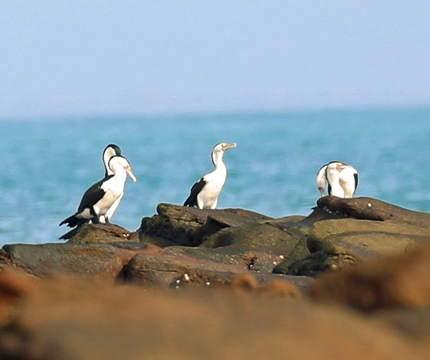
Image provided by Cecile Espigole
-
This large wader has a strong, black-tipped yellow bill, a prominent black and white eye stripe and is most active at dusk, dawn and night. The Beach Stone-curlew lays a single egg on the sand, usually in a vulnerable position, just above the high tide mark.
Conservation status: Vulnerable
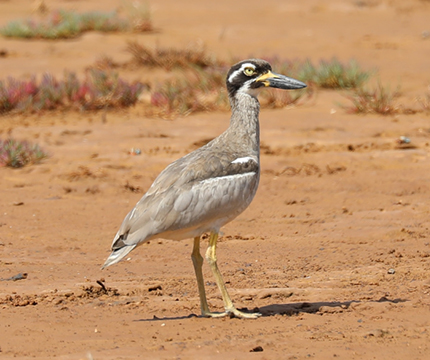
- image captured and supplied by Cecile Espigole.
-
A sturdy sooty black wader with a scarlet bill and pinkish legs. It prefers rocky shoreline and coral reef habitats, breeding mostly on offshore islands. It lays 2-3 eggs in the sand, among rocks, seaweed, pigface and shells.
Conservation status: Secure
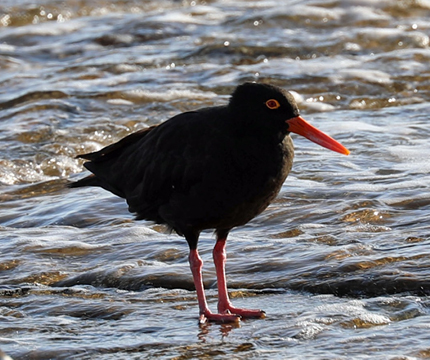
Image captured and supplied by Cecile Espigole.
Many of the shorebirds seen on the Fraser Coast have travelled thousands of kilometres since breeding in the Arctic. Between August and May, an estimated 45,000 birds visit the region to rest, feed and replenish fat reserves for their return journey. Some of the migratory species which visit the Fraser Coast are:
-
At up to 63cm, the Eastern Curlew is the world’s largest shorebird. It has a long down-curved bill, which is used to probe the mud and dig up crabs. The Eastern Curlew lays 2-4 eggs.
Conservation status: Vulnerable
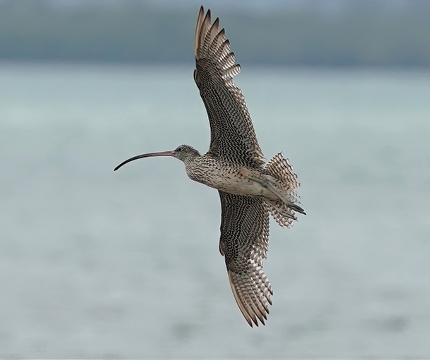
Image captured and supplied by Cecile Espigole.
-
The Lesser sand plover breeds in central and north-eastern Siberia. It forages on mud, sand or open areas of long grass and gathers at high tide roosts with other waders.
Conservation status: Least Concern
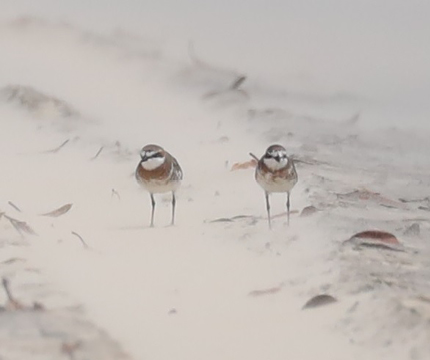
Image captured and supplied by Cecile Espigole.
-
The Whimbrel is a medium-sized curlew, up to 42cm in size. It has a long down-curved bill with a pink lower base. The Whimbrel has a white lower body with coarsely streaked brown upperparts. They lay 2-4 eggs.
Conservation status: Secure
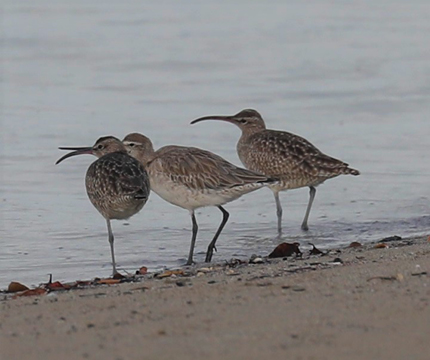
Image captured and supplied by Cecile Espigole.
Ibis
The Australian White Ibis is a native Australian bird and is protected under the Nature Conservation Act 1992. The ibis plays an important role in natural pest management and is one of the few species that have adapted to eat cane toads.
They are an adaptable species living with humans in urban areas, which can cause urban-wildlife conflict.
Due to declining areas of natural habitat and food source, ibis have begun supplementing their diets from landfill sites, bins and litter – hence the nickname ‘bin chicken.’ The availability of food scraps has enabled ibis to become dependent on “human-provided” sources of food, thereby becoming a nuisance to local residents.
Large numbers of roosting and nesting ibis may damage native vegetation and an abundance of ibis may reduce the recreational value of parks and public areas. The issues of concern are smell, noise, unsightliness and defecation. They may also harass humans for food.
Here are some tips to reduce the occurrence of ibis at your property.
- Do not feed ibis or leave scraps of food for them.
- Ensure that garbage bin lids are kept closed.
- Remove water sources and pet food from the backyard.
- Plant native trees instead of exotic palms; they find these exotic species desirable for nesting and roosting and are encouraged to take up residence in them. See our Fraser Coast Greening Guide for recommended plant species.
- Do not harm or harass the birds.
Fraser Coast Regional Council continues to undertake works to reduce exotic vegetation in problem urban areas, to discourage their nesting, roosting and feeding near dwellings and in public areas.
